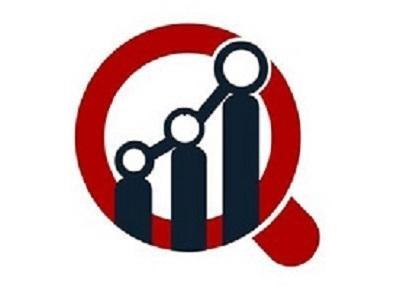The Rise of Connected Car Data Platforms

In the era of digital mobility, connected car data platforms are fast becoming foundational for the automotive ecosystem. These platforms aggregate, process and leverage the massive streams of data produced by modern vehicles—ranging from onboard sensors, telematics units and connectivity modules—to deliver insights, services and new business models. As vehicles evolve into mobile data‑centers on wheels, these platforms enable automakers, fleet operators and service providers to unlock value from the data flowing between car and cloud.
What Are Connected Car Data Platforms?
Connected car data platforms are cloud‑based or hybrid infrastructures that ingest vehicle‑generated data (such as speed, location, battery status, diagnostic alerts, user behaviour) and consolidate it for processing, storage and analytics. They typically provide features such as device management (for telematics or control units), data ingestion APIs, data lakes or warehouses, analytics engines, consent and privacy management, and dashboards or application layers for different stakeholders. These platforms enable downstream functions such as predictive maintenance, usage‑based insurance, fleet optimisation, software‑defined vehicle services, and customer‑centric applications.
Why They Matter for the Automotive Ecosystem
The importance of connected car data platforms stems from several key factors:
-
Unlocking new revenue streams: Rather than vehicles being purely hardware, data platforms enable recurring service models (over‑the‑air updates, remote diagnostics, premium connected services), shifting automakers and suppliers toward services and subscriptions.
-
Operational efficiency and cost savings: Fleets and OEMs can monitor vehicle health, predict failures, optimise maintenance schedules, reduce downtime, and improve asset utilisation by analysing vehicle data in real time.
-
Enhanced customer experience: Driver behaviour analytics, personalised settings, in‑car digital services and seamless connectivity rely on data platforms to deliver relevant, timely content and features.
-
Safety, regulation and compliance: Data platforms help integrate ADAS data, compliance reporting, remote monitoring and fleet safety functions by consolidating vehicle data and enabling analytics around driver behaviour, environment and risk.
-
Vehicle‑to‑everything (V2X) readiness and software‑defined vehicles: As vehicles gain more sensors, connectivity and automated capabilities, the volume and complexity of data increases. Platforms are the backbone to manage, store and process that data for real‑time or near‑real‑time use‑cases.
Key Features and Design Considerations
When designing or selecting a connected car data platform, several features are critical:
-
Scalability and data volume handling: Vehicles can generate gigabytes of data each day. Platforms must support high‑volume ingestion, storage, processing and retrieval.
-
Data security, privacy and consent: Because vehicle data includes location, behaviour and personal information, platforms must incorporate robust consent management, data anonymisation, regulatory compliance and access controls.
-
Real‑time analytics and event processing: Some use‑cases (e.g., predictive maintenance, driver alerts, fleet safety) require near‑instant processing of incoming data and triggering of actions.
-
Open APIs and integration: The platform should support integration with different telematics units, OEM‑ECUs, third‑party services (insurance, fleet management) and downstream applications.
-
Edge vs cloud architecture: Some processing happens onboard the vehicle (edge) before data is transmitted; the architecture must balance latency, bandwidth, and processing cost.
-
Vendor and device agnostic: Supporting multiple vehicle makes, telematics providers, and hardware devices ensures broad applicability and avoids lock‑in.
Challenges and Market Trends
Despite the promise, implementing connected car data platforms comes with challenges:
-
Data quality and heterogeneity: Different vehicles and telematics units generate data in varying formats, and normalising this data is complex.
-
Ownership and monetisation of data: Clear models are needed—who owns the data (driver, OEM, telematics provider), how much access is granted, and what revenue share applies.
-
Infrastructure and cost: Building global, secure, resilient platforms with low latency and high availability is capital intensive.
-
Interoperability and standards: Harmonised data standards across manufacturers, geographies and devices are still evolving.
-
Driver and public trust: Handling personal and vehicle data raises privacy concerns; transparency, consent processes and ethical data use are essential for user acceptance.
Looking Ahead
Connected car data platforms are poised to be even more influential as vehicles become more software‑defined, autonomous and integrated into broader mobility networks. Future developments include:
-
Advanced machine‑learning and AI insights: Beyond simple telematics metrics, platforms will provide anomaly detection, predictive analytics and behaviour modelling.
-
Vehicle‑to‑cloud‑to‑vehicle services: Data platforms will enable vehicles to share insights with infrastructure, other vehicles or mobility services.
-
Ecosystem partnerships: Insurers, smart‑city infrastructure, energy providers and mobility services will all connect to vehicle data platforms for integrated services.
-
Flexible, subscription‑based models: OEMs will increasingly monetise features via the platform—premium apps, feature unlocks, or service bundles delivered over the air.
FAQs
1. What exactly is a connected car data platform?
It is a backend infrastructure that receives, stores, processes and analyses data generated by vehicles—such as telematics, sensor readings, location, diagnostics—and delivers services, insights and applications to OEMs, fleets, drivers and third‑party providers.
2. How do connected car data platforms benefit fleet operators or drivers?
For fleet operators, they enable real‑time monitoring, predictive maintenance, route optimisation and cost management. For drivers, they enable personalised services, remote diagnostics, usage‑based insurance or enhanced vehicle experience through connected features.
3. What are key considerations when selecting a connected car data platform?
Important factors include scalability to handle large vehicle data volumes, strong data security and user consent management, open APIs and integration capabilities, support for real‑time analytics, device‑agnostic architecture and clarity on data ownership and monetisation models.
More Related Report
Automotive Diagnostic Scan Tools Market Size

